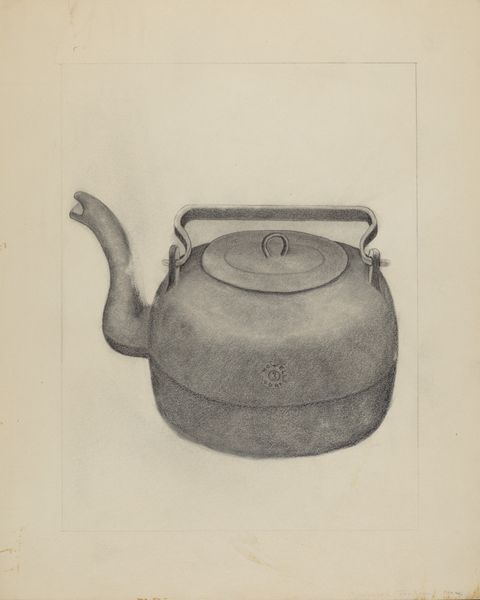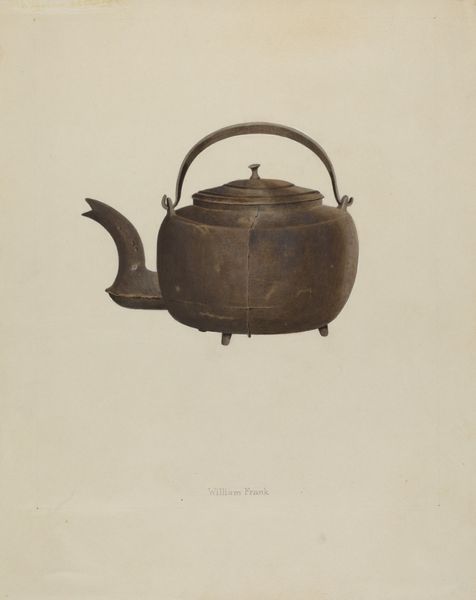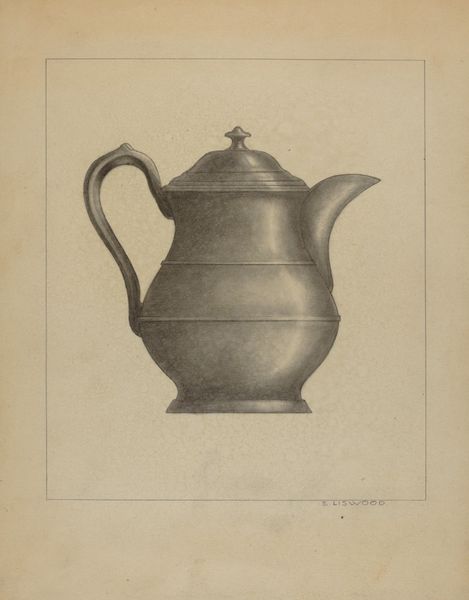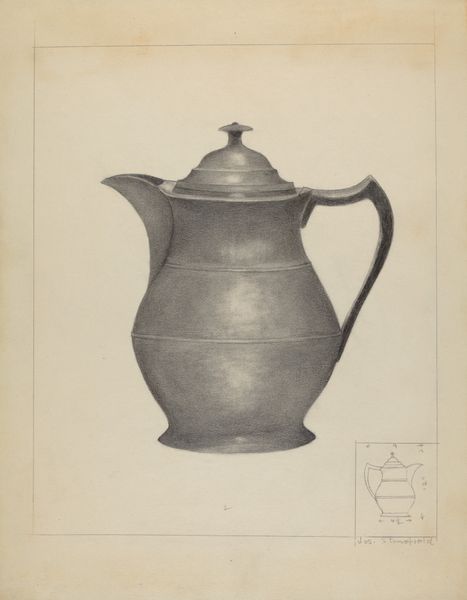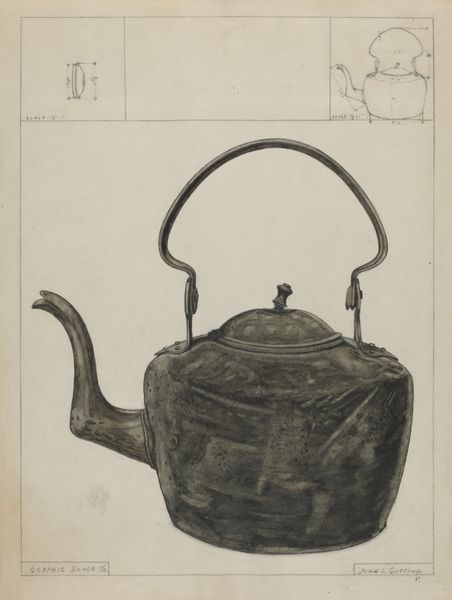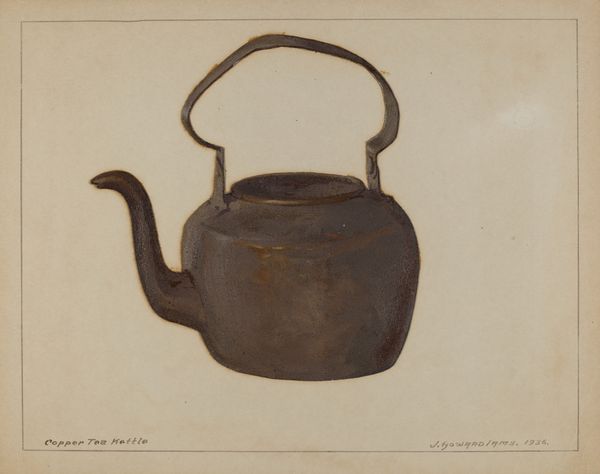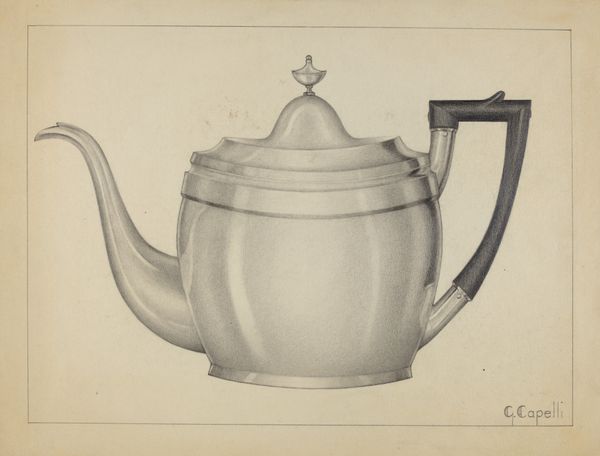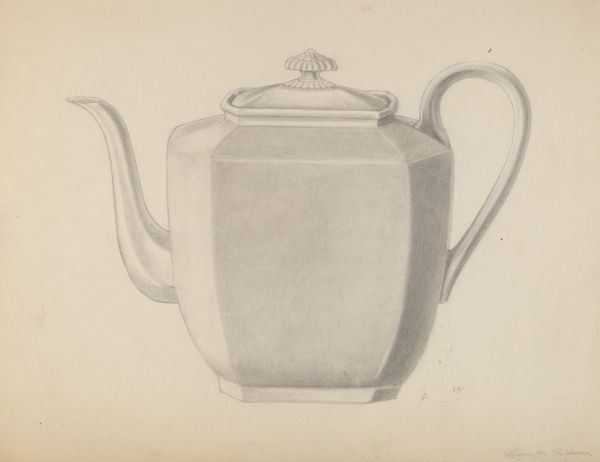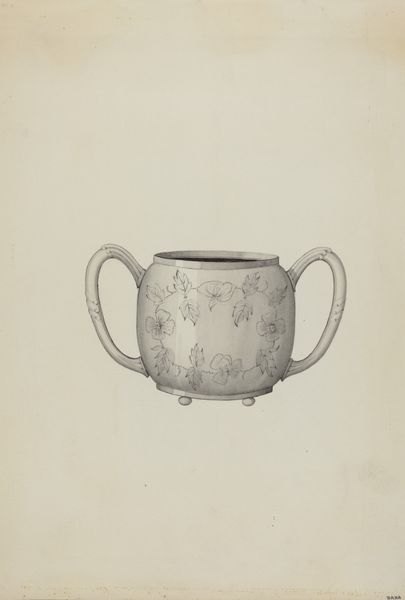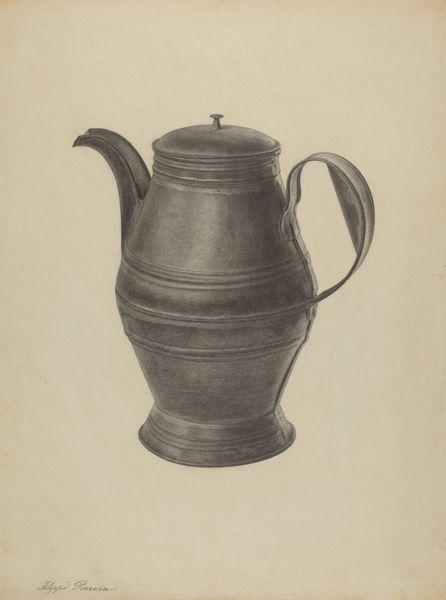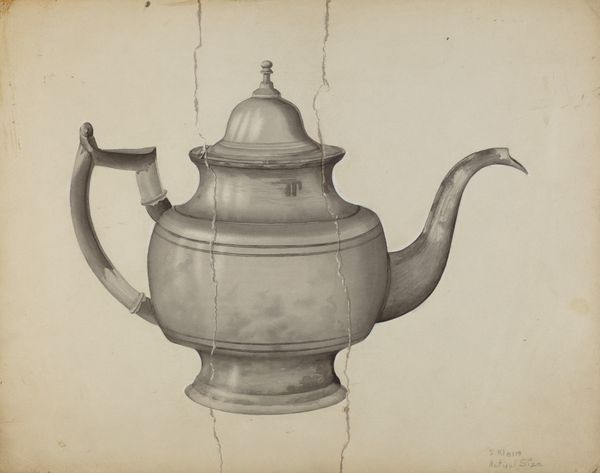
drawing
#
pencil drawn
#
drawing
#
toned paper
#
light pencil work
#
pencil sketch
#
charcoal drawing
#
possibly oil pastel
#
pencil drawing
#
underpainting
#
watercolour illustration
#
watercolor
Dimensions: overall: 33 x 28.3 cm (13 x 11 1/8 in.) Original IAD Object: 7" high; 9" wide
Copyright: National Gallery of Art: CC0 1.0
Editor: This is William Schmidt's "Cast Iron Tea Kettle," created around 1938. It’s a drawing, likely with pencil and maybe some watercolor. I’m really struck by how solid and heavy it looks, despite being on paper. What do you see when you look at it? Curator: The artist’s choice of subject is telling. In 1938, as mass production boomed, the focus on a hand-crafted object like this kettle elevates the labor involved in its creation, both the kettle itself and the drawing. It’s not just about representation; it’s about acknowledging the means of production and the hands that shaped it. Editor: So, you’re saying it’s a commentary on industrialization? The artist is almost saying that handmade things have inherent value, despite factories churning out cheaper goods? Curator: Exactly. Think about the materiality itself. Cast iron, heavy, durable – a contrast to the delicate paper and pencil. This tension speaks volumes about the changing landscape of work and value during that era. The medium and subject challenge the hierarchy between fine art and everyday objects, forcing us to reconsider the value we place on different forms of labor. Where was this artist situated socioeconomically, how did his position affect the kind of work he thought was worthwhile? Editor: That's interesting. I was so focused on just seeing a teapot, I completely missed that subtext. It’s more than just a simple drawing, but rather, a statement. Curator: Precisely. By drawing our attention to something as ordinary as a tea kettle, Schmidt compels us to examine the world of objects and how labor creates a whole system of human activity and how that world can shift and change. Editor: I hadn't considered that an object so simple could spark a conversation on labor and consumerism. I’ll never look at still life the same way again. Curator: The beauty lies in the object's ability to tell such stories!
Comments
No comments
Be the first to comment and join the conversation on the ultimate creative platform.
